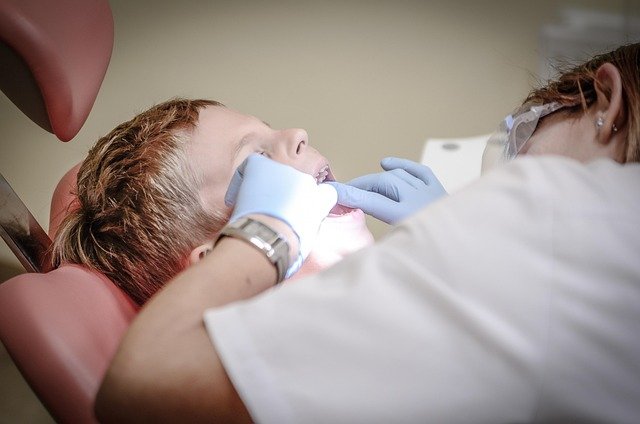Understanding Pricing Structures for Permanent Tooth Solutions
Permanent tooth replacement has become increasingly accessible across Indonesia, offering solutions for those seeking to restore their smile and oral function. Modern dental technology provides various approaches to replacing missing teeth, each with distinct characteristics, procedures, and financial considerations. This guide examines the pricing landscape, treatment options, and factors that influence the overall investment in permanent tooth restoration, helping you make informed decisions about your dental health journey.

Exploring Dental Implant Options and Costs?
Permanent tooth replacement involves surgically placing titanium posts into the jawbone, which serve as artificial tooth roots. These posts fuse with the bone through a process called osseointegration, creating a stable foundation for replacement teeth. The procedure typically occurs in stages: initial consultation and planning, surgical placement of the post, healing period, and finally, attachment of the crown or prosthetic tooth.
Several types exist to accommodate different needs. Single-tooth replacements address individual missing teeth, while multiple-tooth solutions can replace several teeth using fewer posts through bridge configurations. Full-arch restorations provide comprehensive solutions for those missing all teeth in an upper or lower jaw. The choice depends on factors including bone density, oral health status, number of missing teeth, and budget considerations.
Material quality significantly impacts both durability and cost. Titanium posts remain the most common choice due to their biocompatibility and strength. Zirconia alternatives offer metal-free options for those with sensitivities or aesthetic preferences. Crown materials range from porcelain-fused-to-metal to all-ceramic options, each affecting the final appearance and price point.
Looking for Dental Implant Price Info?
Cost structures vary considerably based on multiple factors including clinic location, practitioner experience, materials used, and treatment complexity. In Indonesia, prices differ between major cities like Jakarta, Surabaya, and Bali compared to smaller urban areas. International-standard clinics typically charge higher rates than local practices, reflecting differences in equipment, materials, and expertise levels.
A single-tooth restoration generally includes the surgical post, abutment (connector piece), and crown. Additional procedures such as bone grafting, sinus lifts, or tooth extractions increase overall expenses. Diagnostic imaging, including CT scans and X-rays, adds to preliminary costs. Some clinics bundle these services into package pricing, while others itemize each component separately.
Geographic location within Indonesia influences pricing significantly. Jakarta and Bali, with higher concentrations of international patients and premium facilities, tend toward the upper price ranges. Provincial capitals and secondary cities often provide more economical options while maintaining quality standards. Exchange rates also affect costs for those paying in foreign currencies.
| Service Type | Provider Category | Cost Estimation (IDR) |
|---|---|---|
| Single Tooth Restoration | Local Clinic | 15,000,000 - 25,000,000 |
| Single Tooth Restoration | International Standard Clinic | 25,000,000 - 45,000,000 |
| Multiple Teeth (per tooth) | Local Clinic | 12,000,000 - 22,000,000 |
| Multiple Teeth (per tooth) | International Standard Clinic | 22,000,000 - 40,000,000 |
| Full Arch Restoration | Local Clinic | 80,000,000 - 150,000,000 |
| Full Arch Restoration | International Standard Clinic | 150,000,000 - 300,000,000 |
Prices, rates, or cost estimates mentioned in this article are based on the latest available information but may change over time. Independent research is advised before making financial decisions.
Want to Learn Dental Implant Payment Options?
Financing solutions help manage the financial commitment associated with permanent tooth restoration. Many Indonesian dental clinics offer installment plans, allowing patients to spread payments over several months or years. These arrangements typically require an initial deposit followed by monthly payments, sometimes with interest charges depending on the plan structure.
Third-party medical financing companies partner with dental practices to provide credit facilities specifically for healthcare expenses. These services often feature flexible repayment terms and competitive interest rates. Some patients opt for personal loans from banks or credit unions, though interest rates may be higher than specialized medical financing.
Insurance coverage varies significantly among providers and policy types. While basic dental insurance rarely covers elective procedures, some comprehensive health insurance plans include partial reimbursement for medically necessary tooth replacement. Reviewing policy details and consulting with insurance representatives helps clarify coverage extent and claim procedures.
Health savings accounts and flexible spending accounts, where available, allow pre-tax income allocation toward medical expenses. These tools reduce the effective cost by lowering taxable income. Employer-sponsored health benefits sometimes include dental coverage with provisions for restorative procedures, making workplace benefits review worthwhile.
Factors Affecting Treatment Duration and Success
Treatment timelines span several months from initial consultation to final restoration. The healing phase after surgical placement typically requires three to six months for proper bone integration. This period varies based on individual healing capacity, bone quality, and whether supplementary procedures like grafting were necessary.
Success rates exceed 95% when performed by qualified practitioners with proper patient selection and post-operative care. Factors influencing outcomes include oral hygiene maintenance, smoking status, systemic health conditions like diabetes, and bone density. Regular follow-up appointments ensure proper healing and allow early intervention if complications arise.
Patient candidacy depends on adequate bone volume and density to support the posts. Those with significant bone loss may require grafting procedures to build sufficient foundation. Overall health status matters, as certain conditions or medications affect healing capacity. Age itself is not a barrier, though growing adolescents typically wait until jaw development completes.
Comparing Permanent Solutions with Alternatives
Traditional bridges require grinding down adjacent healthy teeth to serve as anchors, potentially compromising their long-term health. Permanent posts preserve neighboring teeth by replacing only the missing tooth independently. While bridges cost less initially, they may require replacement every 10-15 years, whereas properly maintained permanent solutions can last decades.
Removable dentures offer the most economical immediate solution but lack the stability and comfort of fixed options. They require regular removal for cleaning and may shift during eating or speaking. Bone loss continues beneath dentures over time, eventually requiring adjustments or replacements. Permanent solutions stimulate bone preservation through normal chewing forces transmitted through the posts.
Long-term value considerations favor permanent solutions despite higher upfront costs. Their durability, functionality resembling natural teeth, and bone preservation benefits provide advantages that accumulate over years. Quality of life improvements including confident eating, speaking, and smiling contribute to overall satisfaction that transcends purely financial calculations.
Selecting Qualified Practitioners and Facilities
Practitioner credentials significantly impact treatment outcomes. Oral surgeons and periodontists receive specialized training in surgical procedures and bone management. Prosthodontists focus on tooth replacement and restoration aesthetics. General dentists with advanced implantology training also perform these procedures. Verifying qualifications, experience levels, and success rates helps ensure competent care.
Facility standards matter for both safety and results. Modern equipment including 3D imaging technology enables precise planning and placement. Sterilization protocols and infection control measures protect patient health. International accreditation from organizations like JCI (Joint Commission International) indicates adherence to rigorous quality standards, though many excellent clinics operate without formal accreditation.
Patient reviews and testimonials provide insights into real experiences with specific practitioners and clinics. Before-and-after photographs demonstrate aesthetic capabilities. Consultation appointments allow assessment of communication quality, treatment planning thoroughness, and comfort level with the proposed approach. Multiple consultations enable comparison of recommendations and pricing structures.
Permanent tooth restoration represents a significant investment in oral health, function, and confidence. Understanding the pricing landscape, available options, and factors influencing costs empowers informed decision-making. While expenses vary considerably, numerous financing solutions make treatment accessible. Selecting qualified practitioners and facilities ensures optimal outcomes that justify the investment through years of reliable service and improved quality of life.




